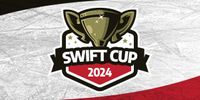
To reduce the risk of Dutch Elm Disease, Saskatchewan will be under a tree pruning ban from April 1st to August 31st.
The Northern Elm bark beetles are attracted to the freshly pruned cuts of elm trees, posing the threat of spreading Dutch Elm Disease to healthy trees and infecting them.
"The beetle is a native insect to Saskatchewan, so it's not really the beetle we're concerned with, it's the fungus the beetle can carry on its back," said Forest Insect and Disease Program Specialist with the Ministry of Environment, Colin Arndt. "What happens is when a beetle goes into a tree that's infected with Dutch Elm Disease, it picks up this fungus and then it carries it to healthy elm trees."
Arndt says removing dying elm wood will help to curb populations of the beetle by reducing places for beetles to breed, adding that transporting or storing elm firewood is also illegal.
"These beetles can be transported unwittingly by people, because they spend portions of their life cycle underneath the bark. If you transport a log that is infected with Dutch Elm Disease into an area that previously hasn't had the disease present, these beetles under the bark can fly out and attack healthy trees and introduce the fungus into their vascular tissue."
In addition, provincial regulations require commercial pruners of elm trees to complete a recognized training program or be under the supervision of someone who has.
"The reason for this is because improperly pruned trees can lead to tree mortality and a number of other things, including leaving it more susceptible to both diseases and insects," explained Arndt. "There's a course that is offered through the SIAST campus that basically goes over the proper pruning techniques and how to identify different tree species and so on."
Elm wood must be disposed of promptly using the method and locations chosen by each municipality if infected with the disease.
In Swift Current, those with infected trees can simply take them to the landfill to be disposed of.














